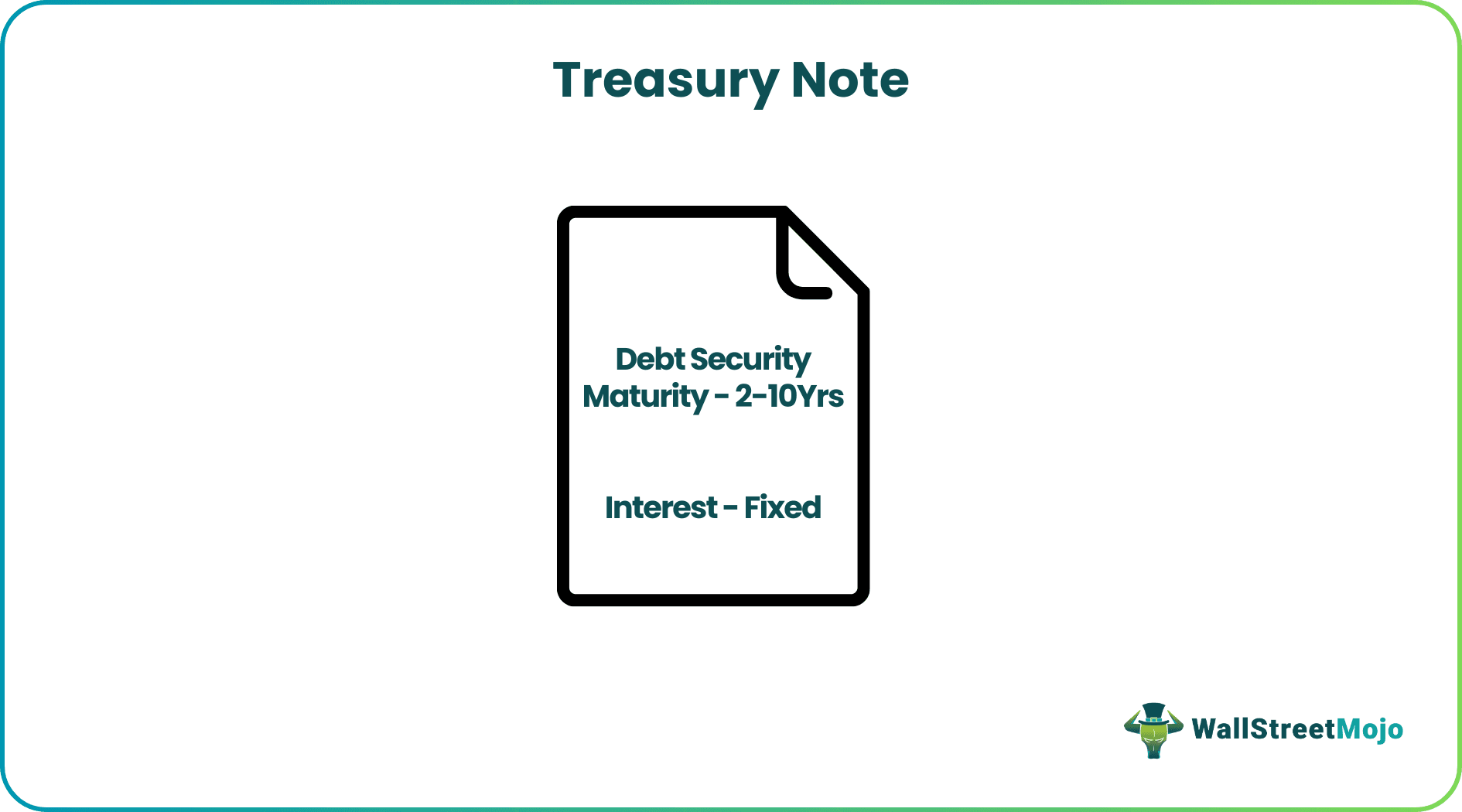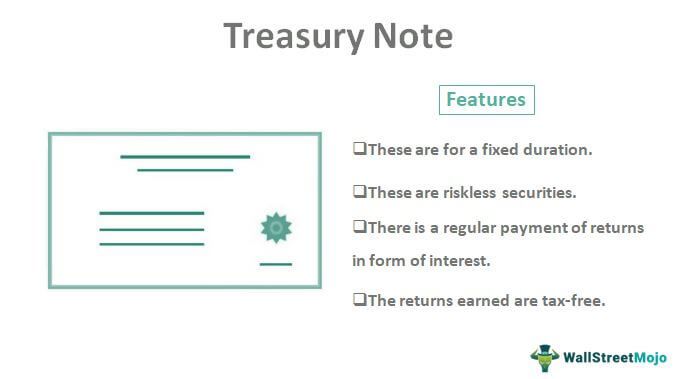Table Of Contents
What Is A Treasury Note?
A Treasury note is an instrument carrying a fixed interest rate and duration issued by the government in the market. This note is the most preferred option as the government gives it (hence, no risk of default) and provides a guaranteed amount as a return, which helps the investor plan their expenses accordingly.

It best suits those who are dependent on someone, such as senior citizens who need regular funds to live their livelihood. Its maturity ranges between 2 years to 10 years. The interest is fixed, and the yield may be competitive or non competitive. It is trendy in the secondary market, which makes it highly liquid. The interest is half yearly or annually.
Key Takeaways
- A Treasury note is an instrument possessing a fixed interest rate and duration that the government issues in the market. It is the most preferred option as the government gives it (hence, no risk of default).
- It facilitates a guaranteed amount as a return that helps the investor plan their expenses accordingly.
- Fived duration, riskless securities, regular returns payment in the form of interest, and exemption from tax are the features of the Treasury note.
- The amount invested is not liable to capital appreciations or losses; only the principal amounts are fixed.
How Do Treasury Notes Work?
Treasury notes are debt instruments that have maturity ranging from 2 to 10 years with fixed treasury note rates. They are popular investment options in the secondary market and are very liquid.
They are made available in the market through either competitive bids, where the investor can decide the treasury note yields, or it can be a non-competitive bid, in which the investor will have to accept whatever yield they get.
‘Treasury note’ is considered the best option to start trading or if in the learning phase as the principal amount invested is 100% secured and will also earn a fixed interest rate. The trading is on the online platform, so there is no intermediary. All facilities can be self-accessed and used by logging into our account, including purchasing and redeeming investments.
Features
- These are for a fixed duration.
- These are riskless securities.
- There is also a regular payment of returns from the treasury note rates in the form of interest.
- The returns earned are tax-free, i.e., exempt from tax.

Example
Let us take an example.
Suppose Mr. A has invested in the government scheme of Treasury notes which is as follows: -
- Period of investment = 2 years
- Rate of interest = 12% p.a.
- Amount invested = $1,000,000
- Interest due and payable = every 6 months
- Date of investment = 01.04.2020
- Date of maturity = 31.03.2022
Mr. A will pay the treasury note maturity amount along with the prior interest.
Solution:
First, we have to calculate the half-yearly rate of interest, the rate of interest for six months, which is as follows: –

Half-Yearly Rate = 12% * 6 months / 12 months = 6%.
The amount of treasury note interest to be received on investment at the end of every six months will be: -

Amount of interest to be received on investment at the end of every six months = Amount invested * Rate of interest.
Amount of interest to be received on investment at the end of every 6 months = $1,000,000 * 6% = $60,000.
Amount to be received at last installment will be: -

Amount to be received at last installment = 1,000,000 + 60,000 = $1,060,000.
In the above example, Mr. A will receive a four-installment of half-yearly interest of $60,000 and a sum of $1,000,000 at the time of the last interest payment as maturity value.
How To Buy?
There are two options to invest in such securities, which are as follows: -
- Investment through a broker, bank, or any authorized intermediary will do all the legal formalities on our behalf and charge some amount as commission or service charges.
- The other option is to buy on your own by getting registered ourselves on the securities market portal or, say, by opening a trading account, then by placing a bid for purchase and adding the amount of investment in such a trading account through which the exchange will deduct the due sum and allot us the units purchased.
Investing In Them
As they are the safest option to invest by a fresher or even by an expert, the main drawback is that it gives us the treasury note yields, which are quite lower than other investment options available in the market. As the investments are made for such a long span, if the investor has better opportunities or needs funds, they cannot withdraw without paying requisite prematurity charges. The amount invested is not subjected to capital appreciations or losses; only the principal amounts are fixed.
Importance
The fund’s manager who is managing the funds also needs such types of investments that are risk-free and will earn a fixed rate of treasury note interest, so to fulfill that part of the investment, this is the most considered option the investors choose as the government itself issues it, so it is also considered as the risk-free safest investments by the investor.
Advantages
- As it carries a fixed interest rate payable every six months, one can easily plan its income and expenses accordingly.`
- Receiving interest from such a Treasury note will be tax-free or exempt from tax.
- It allows the investor to quote its required rate of interest, which might get approved.
Disadvantages
- As it allows the investor to quote its rate of return, it will cost more to the government on approval.
- The investor has to wait so long to get the invested amount as the duration of such a scheme is too long.
- It will unnecessarily cost the investor to redeem their investment before treasury note maturity.
Treasury Note Vs Bonds
Treasury notes have the maturity period of two, three, five, seven or ten years, whereas bonds have a maturity period of usually 30 years.
Bonds offer a very high interest due to its longer term but notes offer lesser interest rates.

